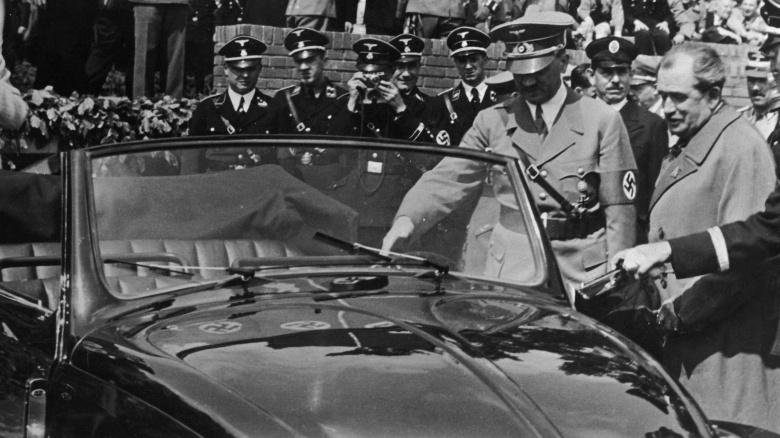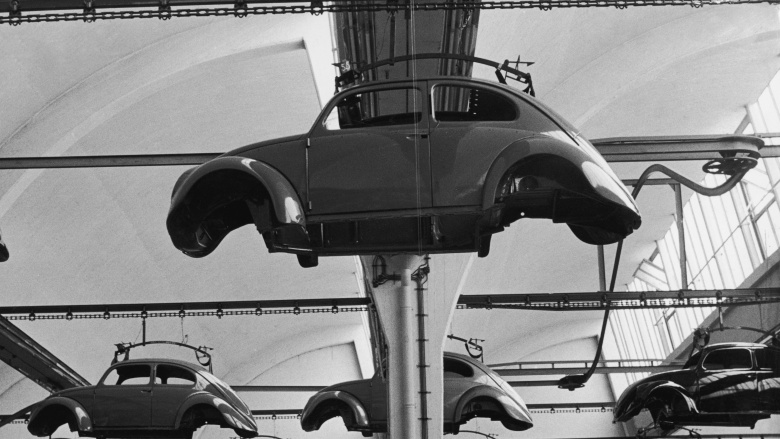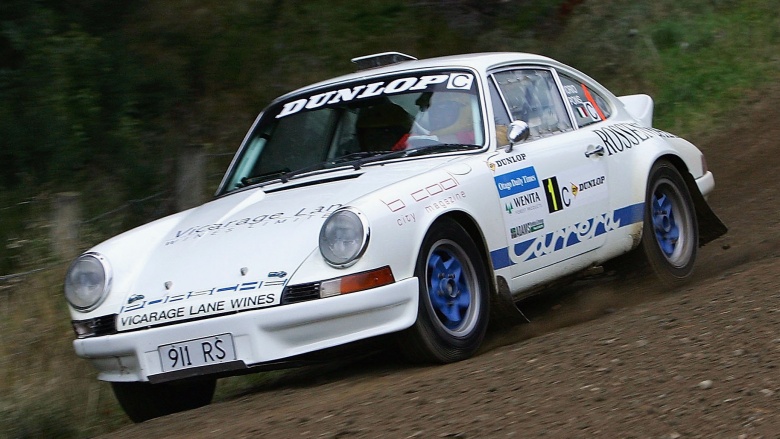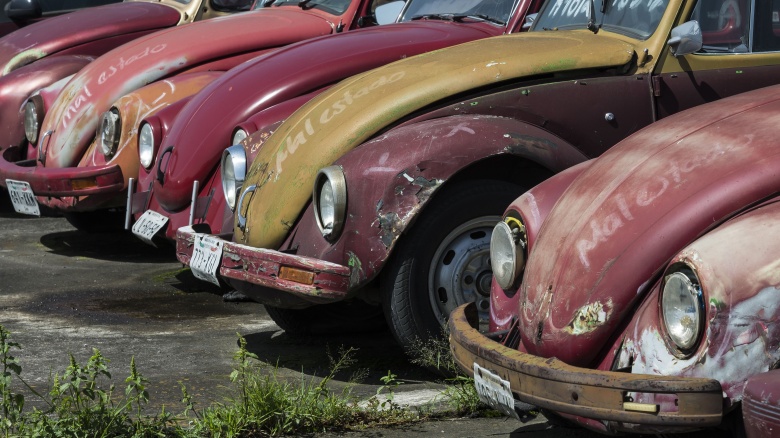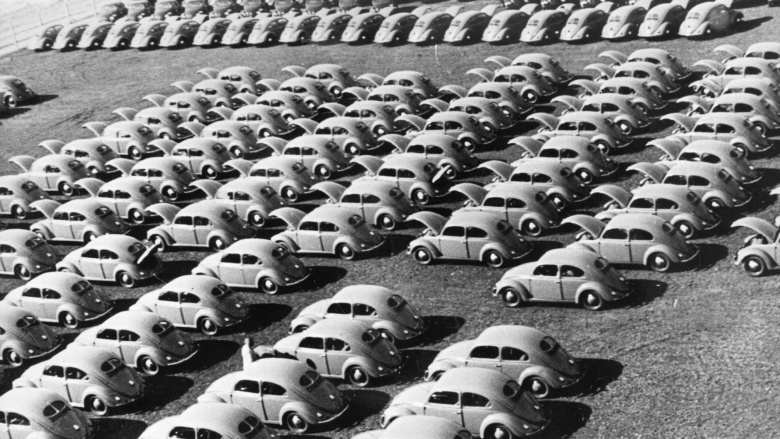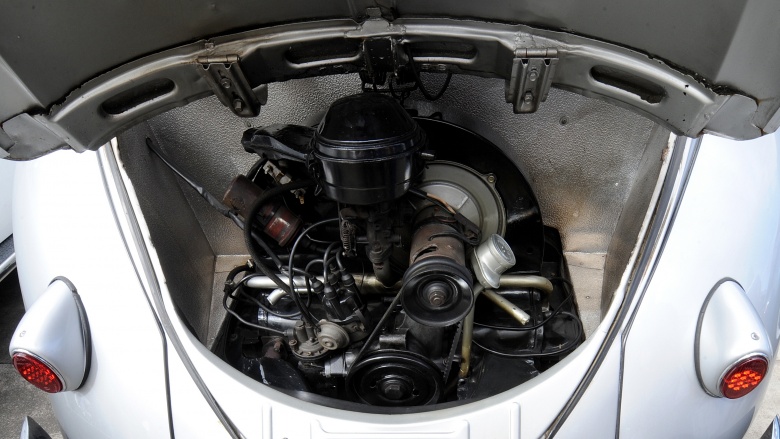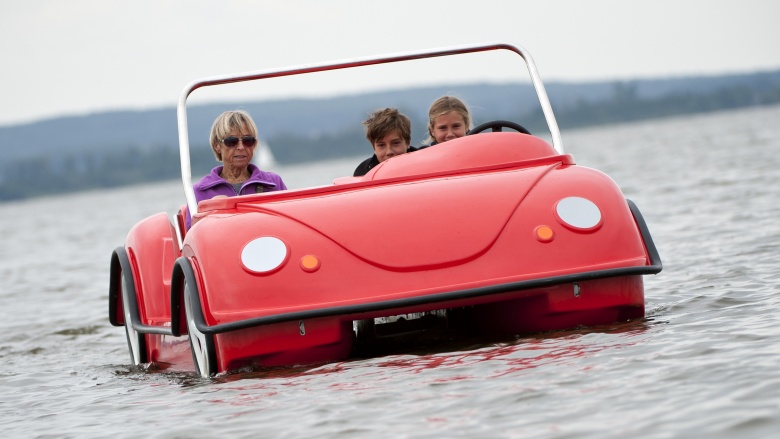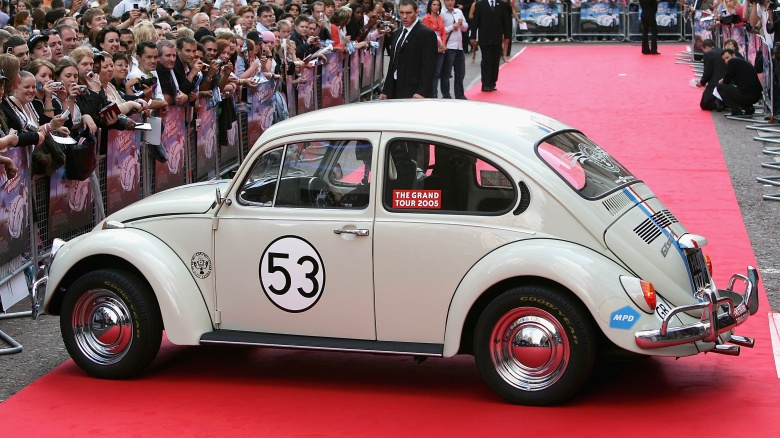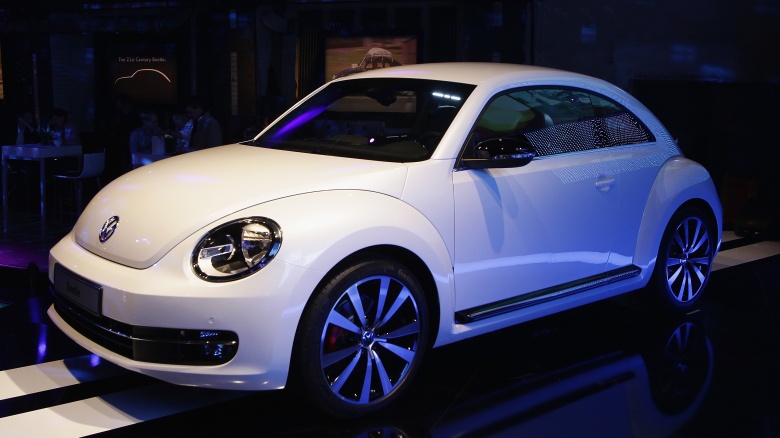What You Never Knew About The VW Bettle
The Volkswagen Beetle is something of a vehicular icon, with its instantly recognizable design and pop culture fame. But despite the most obvious associations with the '60s—not to mention peace, love, and rock and roll—the biography of the Beetle contains a lot more chapters, and most of them aren't written in English. So in case you don't read German, here are a few facts you probably don't know about the Volkswagen Beetle.
The idea was conceived by...Adolf Hitler
At the beginning of the 20th century, car ownership in Germany was the preserve of the rich, and the rich liked big expensive cars. Which meant that in the early 1930s when the construction of the Autobahn highways was begun, the only people able to use the new speed routes were the elites. So none other than Adolf Hitler proposed the development of an affordable car that would bring car ownership within reach of the masses. The car that would become the Beetle was born. It took until 1938 for the first cars to roll off the production line, and by that time one (or actually several) of Hitler's less bright ideas was about to throw a monkey-wrench in the works. So despite their great enthusiasm, the people would have to wait a little longer to get their hands on the people's car.
Strength through joy
While ol' Adolf was on the right track when he came up with the Beetle itself, his overall record for coming up with good ideas is, of course, the worst. As such, he was back to his usual awful self when he tried to name it. His preferred title for the new car of the people was the "Strength Through Joy Car." Unsurprisingly it wasn't long before the people for whom the car was intended started calling it "the people's car"—or Volkswagen—and as you might have noticed, this name stuck.
My other car's a Porsche...kinda
When Hitler was looking for someone to build his new car, he turned to his fellow Austrian Ferdinand Porsche. Porsche had been working on the idea of an affordable car for the masses for a long time, so when the call came, it didn't take him long to come up with a design. And if you look at the classic bug he designed for Hitler, and imagine it a bit shorter, you would be forgiven for thinking it bore a vague similarity to another Porsche design. Because after he was done with the bug, Porsche and his son started work on a new race car based on the same chassis. That race car that would eventually become the 911.
65 years young
If you've seen one Beetle, you've probably seen a bunch, and they weren't all junkers. And that's because, although the Volkswagen Beetle was first produced in 1938, production actually continued right up to 2003—an amazing 65 years. The last original Beetle to be sold in the US changed hands in 1979, and although production continued in Mexico until 2003, imports were prohibited due to emissions regulations. The Volkswagen that stepped in to replace the Beetle on the sales floor (if not in the hearts of consumers) was the Rabbit. But despite improved features, it never caught the public's imagination in the same way. Who ever said Americans don't like bugs?
21,529,464
In 1972, the Volkswagen Beetle strode into the record books when it finally outsold the Model T Ford—and then it kept right on selling. When the last car rolled off the assembly line in 2003, production numbers stopped counting up at an unbelieveable 21,529,464, by which time it had itself been outsold by the Volkswagen Golf. Two of the last Beetles to be made in Germany have been stored in wax to preserve them for posterity, but considering the incredible number of examples still chugging along all around the world and the decline of bee populations, the wax will probably be a rare collectors item long before the cars will.
Air-cooled engine
One of the concessions to economy made by Ferdinand Porsche in the design of the Beetle was the use of an air-cooled engine. These days it's very rare to find an automobile engine that isn't cooled by water pumped through radiators. Water-cooling offers several advantages over air-cooling, not least of which is more effective cooling in hot weather. But Porsche decided to keep things simple, and it worked. The four-cylinder Beetle engine was so good, it wasn't long before it was getting ripped out and used to power any number of other vehicles up to and including airplanes—and that can only be considered a positive endorsement since it's pretty hard to call a tow truck at 20,000 feet.
It floats!
Cheap doesn't always have to mean badly made, and in the case of the Beetle that's definitely true. An early advertisement for the Beetle promoted the fact that, if dropped in water, the vehicle would stay afloat for several minutes. This somewhat odd advertising tactic was actually a clever way to demonstrate the build quality of the vehicle by proving how well the doors would seal, and how well body panels and other parts were fitted together. Which is all great, until you have to open the door to escape the slowly sinking car you just drove into the lake.
Star of the silver screen
The design of the beetle is pretty unique. In fact, you could definitely say it has character. It has so much character that in 1968 Disney starred a Volkswagen beetle in the lead role of the movie The Love Bug, which went on to have five sequels. Herbie, as the anthropomorphic bug was known, was a self aware car in a similar vein to Kitt from Knight Rider, but with a better sense of humor and no voice. Herbie was also a racing car for some reason that always seemed to be in contention for the win, which considering the engine that went in those cars, is almost less believable than it having a mind of its own.
Reboot
In 1998, five years before production of the original beetle stopped in Mexico, Volkswagen introduced the New Beetle. Built on a Volkswagen Golf chassis but styled to resemble the original Beetle, the New Beetle was a major attempt to recapture the popularity (and sales success) of the original. Internally, though, the New Beetle was a much more conventional design, with a front-mounted, water-cooled engine driving the front wheels, not to mention a bucket load of now-standard features in the cabin that the original Beetle could only dream about. Since production of the New Beetle continues to this day, it is probably safe to say that the reboot was a success.

